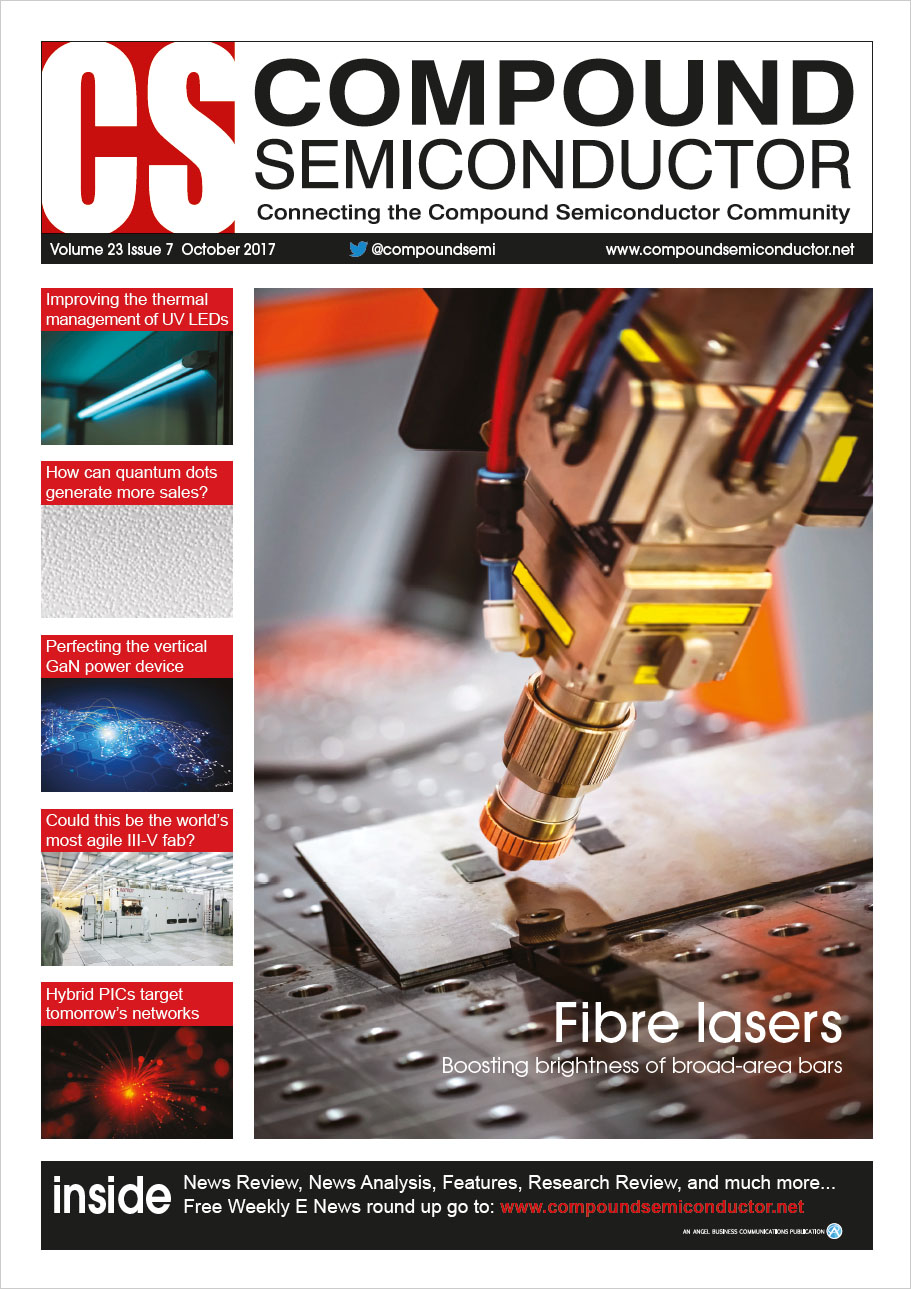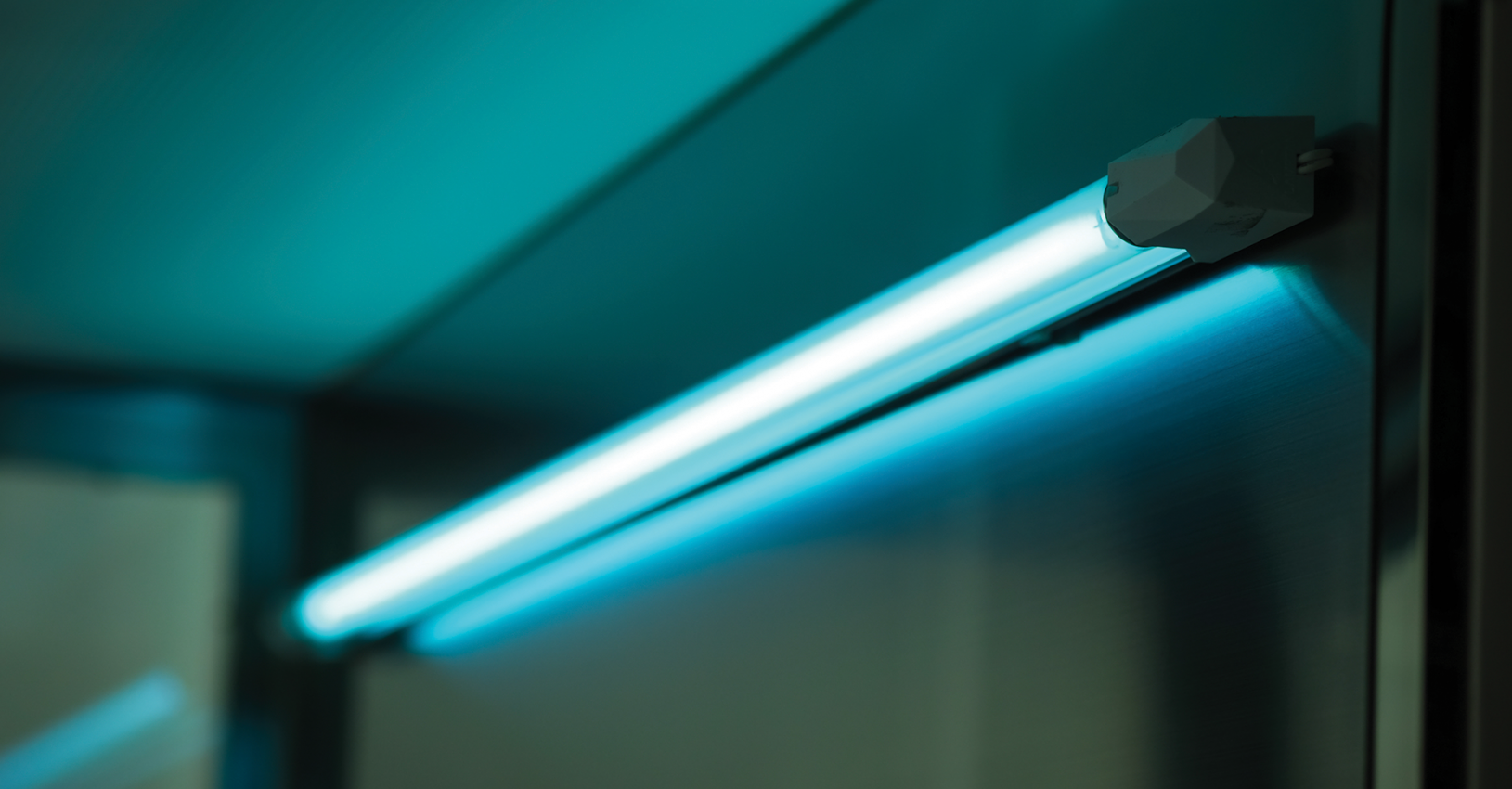
Improving the thermal management of UVC LEDs

UVC LED technology will revolutionise how we disinfect our homes, hospitals and workplaces. But before this can happen, engineers need a better way to remove heat from their designs by John Cafferkey from Cambridge Nanotherm
Over the years mankind has come up with a variety of methods for sterilising objects, surfaces and consumables; from heating, to the use of chemicals, to dehydration.
It has long been understood that natural sunlight can act as a sterilising agent, albeit a relatively weak one. Experiments in the late 19th century demonstrated that water left for a long period in sufficiently direct sunlight would remain free of bacterial growth.
It was later discovered that the cause of this sterilising effect was the ultraviolet C-band (UVC) light present in natural sunlight. Today we can generate UVC artificially, and with a much greater intensity than is present in ordinary sunlight. Such UVC-emitting devices can provide a highly effective means of sterilising different materials.
All UVC disinfection devices, regardless of their size or specific technology, work on the same basic principle: UVC devices emit light in the "˜germicidal range' of 200 nm to 280 nm, a spectral domain that literally "˜breaks apart' the genomes of bacteria, rendering the bacteria inert and therefore sterilising any surface the UVC light irradiates. There are many advantages to the use of UVC to sterilise materials. You can avoid the use of toxic or corrosive sterilising chemicals, which can leave toxic by-products. This makes UVC ideal for applications such as municipal-scale water sterilisation, or any situation where the use of chemicals might be either hazardous or less thorough.
UVC is a better option for tackling chlorine-resistant pathogens such as giardia and cryptosporidium. It may also present the best way to disinfect hard-to-reach areas, or surfaces that will stain or otherwise react upon contact with cleaning chemicals. And regardless of the cost of buying UVC equipment, in many situations UVC can allow companies to reduce the long-term overheads involved in training staff in the use of hazardous chemicals, emergency planning, risk management and insurance.
Issues with traditional UVC technology
One of the factors that has restricted the spread of UVC technology so far has been the reliance on mercury vapour lamps. These are superb for certain applications, being bright, efficient and lasting for a long time. On the other hand they're expensive, fragile and they contain toxic mercury, which restricts the number of applications in which they can be used and demands a closed recycling scheme.
Mercury vapour lamps are well-suited to applications such as municipal water sanitation, for example, where they are commonly used. Here, the relatively high costs of the bulbs can be justified, size isn't much of an issue, and engineers can be on site quickly to manage any breakages.
More importantly, the chances of the public being exposed to toxic substances in the event of a breakage are practically non-existent. But for all the same reasons, mercury vapour lamps aren't suitable for smaller, more portable devices, or in consumer applications where the lamps might be easily broken.
Opportunities for LEDs
Advances in LED technology have reached a point that UV LEDs are not only possible, but are becoming an increasingly attractive option for a range of applications. UVC LEDs are more cost effective than mercury lamps for certain applications "“ and are becoming more cost effective all the time. What's more, UVC LEDs are much smaller, more robust, require less power, can be turned on instantaneously (with no warm-up time), and do not contain significant amounts of hazardous chemicals.
Thermal modelling highlights that Al2O3 (a) fails to deal with the challenge presented by a UV LED. Nanotherm's DMS solution (b) copes with the challenge admirably, and is practically identical to the thermal performance of AlN. This result is to be expected, given that the thermal conductivities of Al2O3 , Nanotherm DMS and AlN are 25 W/mK, 150 W/mK and 170 W/mK, respectively. Calculations were based a "˜Â¼ model', to exploit the symmetry, and considered materials that were homogeneous and thermally isotropic. Die are 150 μm-thick x 1 mm per side (hence 500 μm shown), the solder joint is 50 μm-thick, and the substrate is 500 μm-thick x 6 mm per side (hence 1.5 mm shown). The lower surface of heat sink is fixed at 25 °C. It is assumed that there is a balanced rate of heat generation in the die and removal from the lower surface of the heat sink
According to industry analysts Yole Développement, UVC LEDs will need to drop to a price point of around $1"“$4/mW before they are adopted by the mass market. As a result the UVC LED industry has been focused on reducing costs. As processes have improved, prices have fallen by eight to ten times in recent years. The ultimate aim is to get to the point where UVC LEDs cost around $1 per mW. At the same time the industry has focused on creating higher-performing devices (with a power output of greater than 10 mW per package) that last significantly longer.
As costs reduce, UVC LEDs have fallen to an acceptable price for a wider range of applications.
UVC LEDs will enable a brave new world of disinfection devices. The small size of UVC LEDs, combined with their safety and low power draw, mean that we may well see UVC disinfection embedded in everyday consumer items such as baby feeding bottles, or in toothbrush holders "” enabling these items to be automatically disinfected at the point of use. UVC could also be integrated into handheld cleaning devices, which users could sweep over surfaces, keyboards, mobile phones and more to sterilise them, or into "˜self-sterilising' water bottles and medical equipment.
However, in order to realise the full potential of the UVC LED market, one of the remaining hurdles manufacturers have to overcome is that of thermal management.
The thermal challenge
While incandescent bulbs are able to radiate and convect heat directly into the air, this is not an option for LEDs. UVC LED die measure only a few millimetres along each side, so these chips present too small a surface area to the air for any appreciable cooling by convection. The temperature of each chip is also too low to radiate a significant amount of heat.
The only effective way to remove heat from a UVC LED is by conducting this energy through the materials of the die itself, through the submount and PCB to a heatsink and then to the ambient atmosphere.
In the case of a visible light LED, this problem is usually addressed by mounting the LED on a metal-clad PCB (MCPCB). Generally aluminium is used due to its good ratio of thermal conductivity to cost. This is then topped with a layer of epoxy resin, which acts as a dielectric, electrically isolating the aluminium from the copper circuit layer above.
One major problem, however, is that UV light degrades organic substances such as epoxy. Secondly, the overall thermal performance of such a stack is simply inadequate for the particularly aggressive thermal demands of UVC LEDs.
Our approach is to convert the surface of a sheet of aluminium into an alumina (Al2O3) ceramic, which acts as the dielectric layer. The thickness of this layer can be tightly controlled to just tens of microns thick. This thinness means that the relative thermal inefficiency of Al2O3 ceases to be an issue "“ the ceramic dielectric layer that we create is so thin that heat is conducted through it efficiently.
At Cambridge Nanotherm in Haverhill, UK, we have developed a patented process (involving electro-chemical oxidation "“ our "˜ECO' process) that enables designers to take advantage of the best properties of both MCPCBs and ceramic solutions.
Our approach is to convert the surface of a sheet of aluminium into an alumina (Al2O3) ceramic, which acts as the dielectric layer. The thickness of this layer can be tightly controlled to just tens of microns thick. This thinness means that the relative thermal inefficiency of Al2O3 ceases to be an issue "“ the ceramic dielectric layer that we create is so thin that heat is conducted through it efficiently.
To increase the thermal conductivity of the overall stack even further, the circuit layer is then "˜sputtered' onto this nanoceramic dielectric using a "˜thin-film' process. Essentially the atoms of copper are "˜fired' at the board, wedding them to the board at the atomic level, ensuring maximum thermal efficiency.
The result is an MCPCB-like board with a composite thermal conductivity of 150 W/mK (perfect for UVC LED applications and comparable to AlN) but which is also mechanically robust and can fit within existing MCPCB production processes. Easy machineability and high yields, combined with the low cost of aluminium, make our solution cost effective. And with no epoxy in use, there is nothing for the UV light to degrade.
The boom in LED UVC disinfection has started, and will have major implications for everyone. Manufacturers are creating completely new types of UVC products that will change how the process of disinfection is approached, making it easier to render objects, surfaces and substances safe.
In order to reach this point, however, designers will have to reconsider how they approach the thermal challenges of UVC devices at the board level. Fortunately new technologies are being developed that make UVC LED products a commercial reality.


































